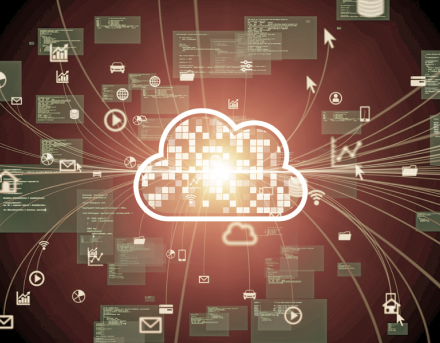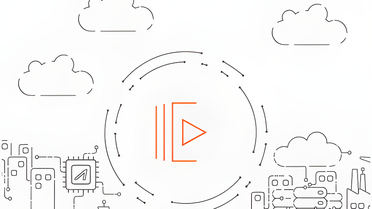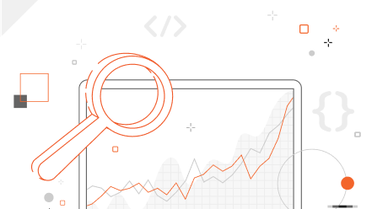Transparency is a core value in edge computing, treated with the same care and respect as qualities like connection speed and security. A key actor in ensuring system transparency is modern Data Stream technology, yet there are still many people who remain unsure of the exact role it plays. We understand that we need to be able to understand what’s happening in our system, but that’s what data analytics does, right? The truth is, data analytics is an irreplaceable piece of the larger data analysis process, providing your analysis tools with all of the information they need to do their job.
This post will provide you with an introduction to Data Stream, and the design philosophy that it supports, and hopefully show you the importance of selecting a Data Stream service that can properly support your system.
The supportive role Data Stream plays means that it doesn’t always get the spotlight it deserves. That’s because Data Stream works in support of a larger practice called observability, a value that is itself still not widely understood.
Observability and Monitoring
For quite some time monitoring capability has been considered the definitive criteria in determining the quality of an analytics tool. Monitoring is all about determining what has gone wrong in your system, and why those events are occurring. Analytics tools responsible for system monitoring work to make sense of the data they are fed, translating it into insights on the health and security of your system. It’s a failure-focused approach to centralizing your data, giving admins and network tools a clear path to tackling pervasive bugs and security vulnerabilities.
So then what does observability add when you already get so much from monitoring?
Let’s say you’re a James Bond style super spy, gathering intel by peering into the villain’s window with your high powered laser-binoculars. If I were to ask you what technology is vital to completing this mission, I’m guessing you’d hold up that same pair of laser-binocs (that probably also doubles as a martini shaker). But you’d be missing the even more obvious, even more essential technology: the window. Without a transparent window to render the house observable to the outside world, it doesn’t matter how powerful your spy gear is, you’re not going to be able to do any espionage.
Now that you’ve chewed your way through that slightly strange metaphor, you can start to see why observability is so critical. Observability principles focus on making monitoring easy by making your system transparent and your data easily observable. Monitoring tools can provide powerful insights into the problems plaguing your system, but it needs access to a lot of data to generate those insights. Observability tools provide that data, and make the monitoring process swift and streamlined.
Observability doesn’t replace monitoring, but complements and supports it. More than any one tool, observability is a cultural value and design philosophy that every enterprise should bear in mind when structuring their digital architecture. Rather than building your network and then designing a tool to monitor it, a truly transparent system is built with observability in mind from the get-go. That being said, there are tools and services that are vital to achieving proper observability.
Data Stream as analytics enablement
If there’s one tool absolutely essential to observability, it’s Data Stream. Data is the lifeblood of observability-monitoring symbiosis, and Data Stream is the high speed highway that delivers your data to your analysis tools.
Moving Past Batch Processing
Conventional data delivery approaches use a batch processing style of delivery, in which a large batch of system data is gathered up and then delivered batch by batch in regular intervals. As modern systems continue to grow more complex, with a myriad number of IoT sensors and applications all generating their own data, batch processing has found itself unable to keep up. And it doesn’t make the job of analysis very easy. Imagine if you were asked to read a book every hour, but instead of reading one page at a time you just had all the pages thrown at you at once. That’s what data analysis has to go through when supported by batch processing. Even worse, at the pace of modern digital infrastructure, any delay can be significant. A batch processing system that delivers a data batch every twenty minutes, is bringing in data that’s twenty minutes old. That’s ancient history in a world where moment to moment interactions are key. You don’t want to find out a crucial server crashed or an attack was detected twenty minutes ago. You need to know the moment the event occurs.
The Real-Time Approach
Luckily enterprises are no longer forced to rely on batch processing. Data Stream is a far more powerful, modern approach, able to transmit system data in real-time. Rather than delivering data in discrete chunks, Data Stream offers a constant stream of moment to moment updates, ensuring that the analysis tools it supports have access to the latest information as soon as data is generated. This approach to data delivery has been embraced across sectors, but is particularly vital in fields where rapid information exchanges occur continuously, including e-commerce, finance, gaming, and social media.
The two key components of a properly structured Data Stream service are storage and processing. Both simple enough concepts, but the real-time speed at which Data Stream operates means both storage and processing need to occur immediately, with the data kept in motion the entire time. The strain this puts on Data Stream tools means that while instantaneous data delivery should be the standard across the board, actual product offerings vary in consistency and fault tolerance. That’s why it’s important to do your research in your search for a Data Stream solution to make sure it can handle the demands of your system.
Obviously with all this talk of transparency and observability, it’s important to ensure that these values apply only to your own internal monitoring tools, in order to avoid opening your system up to some third party malicious actor. That’s why, while high-level security is a necessary best practice in all areas of a network system, it is particularly crucial to secure your Data Stream, given the high volume of raw data that it handles each day.
Azion Data Stream
Azion has our own data delivery service, Azion Data Stream. By using our edge platform, Azion Data Stream provides consistent and fault-tolerant real-time data delivery to support and empower our own and third party data analytics tools. Azion Data Stream is equipped with versatile, prebuilt connectors, enabling an ease and flexibility of configuration that makes upping your system’s observability game quick and painless. Designed to service the needs of our own edge platform, Azion Data Stream is built to handle the raw data generated by thousands of edge nodes, giving it impressive storage and processing power.
Plus, it’s equipped with state of the art, end-to-end encryption, ensuring that all of that data remains accessible to you and only you.
Summary
Instilling the cultural value of observability in your enterprise takes more than just finding the right Data Stream service, but it’s not a bad place to start. Data Stream is the heart and soul of good observability and monitoring practices, giving your data analytics all of the information it needs to catch issues and detect anomalies. Make sure you have a Data Stream tool strong enough to handle your system’s data generation, or you may find your enterprise regressing back to the days of batch processing. If raw processing power and ease of configuration interest you, then you may find Azion Data Stream is the right tool for the job. Upgrade your Data Stream today, and begin the journey to total system observability.







